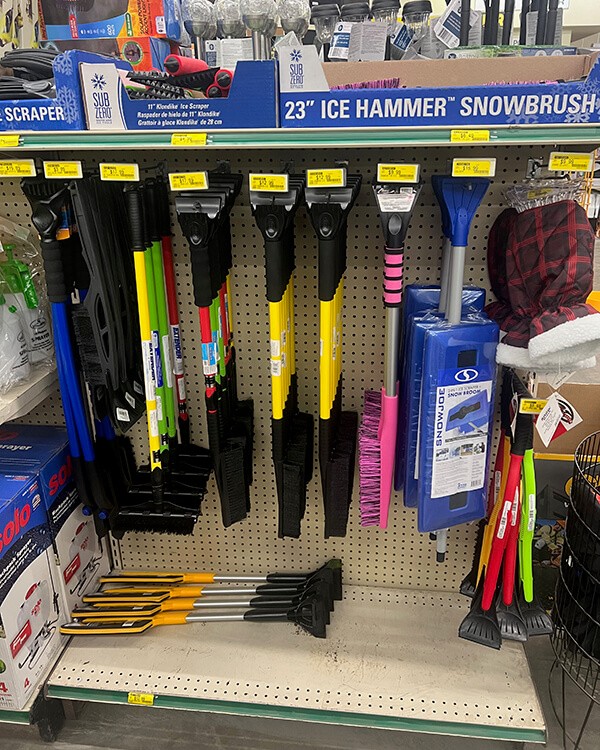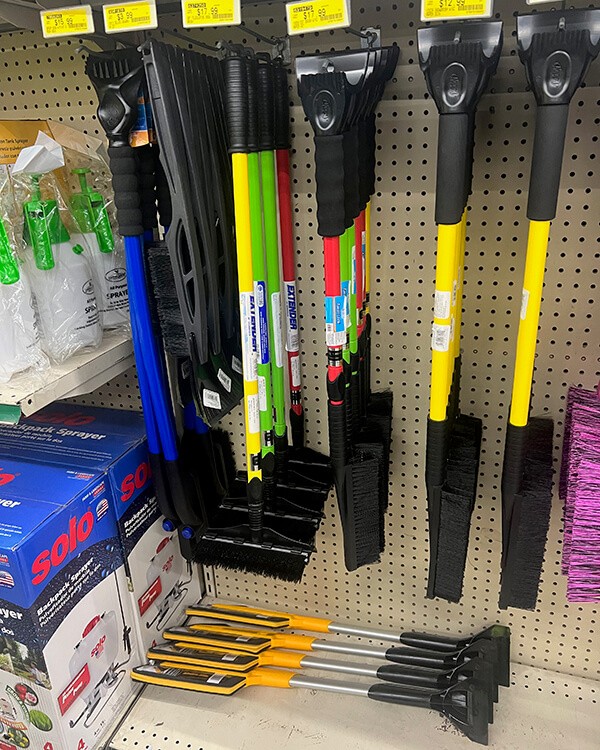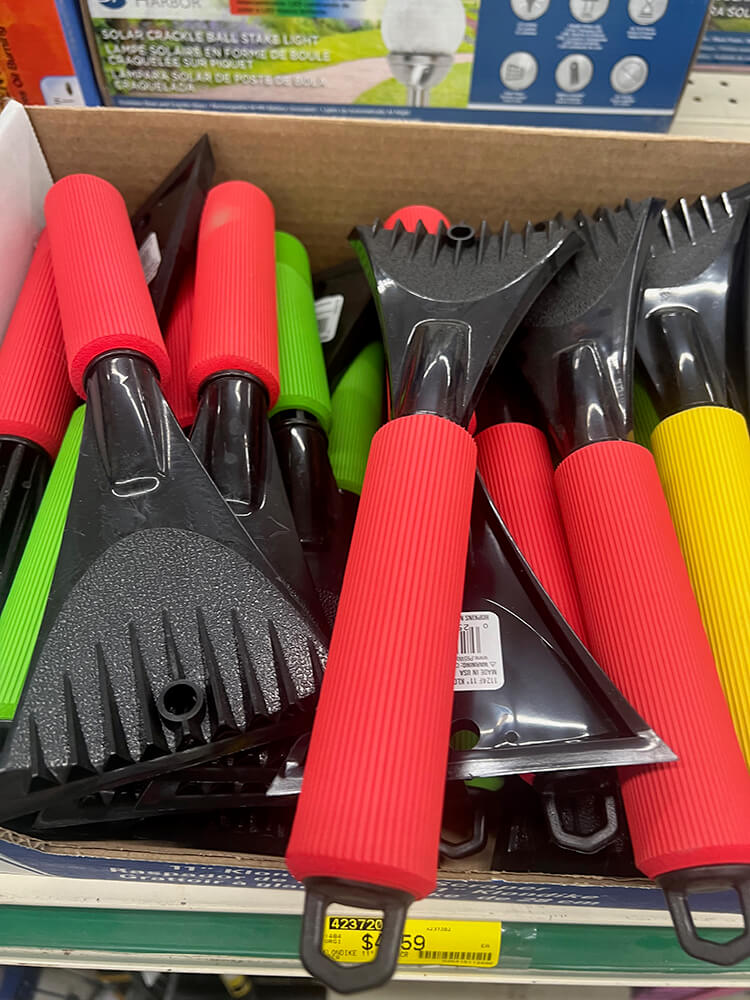Window Ice Scraper to Reduce – Reuse – Recycle
I am interested in reducing my footprint on the planet. Every day, I have a choice on how I use resources. Especially in late March, Vermont still has a lot of winters; ice, snow, and freezing rain are daily winter events that require tools for scraping and sweeping ice and snow. It is almost impossible to get through winter and early spring without a good ice scraper and brush to clean the car windows and remove snow. Many types of scrapers are available to purchase, all made of a combination of lightweight molded plastic and aluminum components, designed to last through one or two winters, only to end up disposed of in the local landfill.
This “I-Sloyd” product is an Automobile Window scraper because most of the ones you buy at the store last a season or less and are then disposed of in landfills as waste. Commercial window scrapers are designed and manufactured for planned obsolescence and eventual disposal. As a result, the materials and components can be recycled or, better yet, rebuilt.
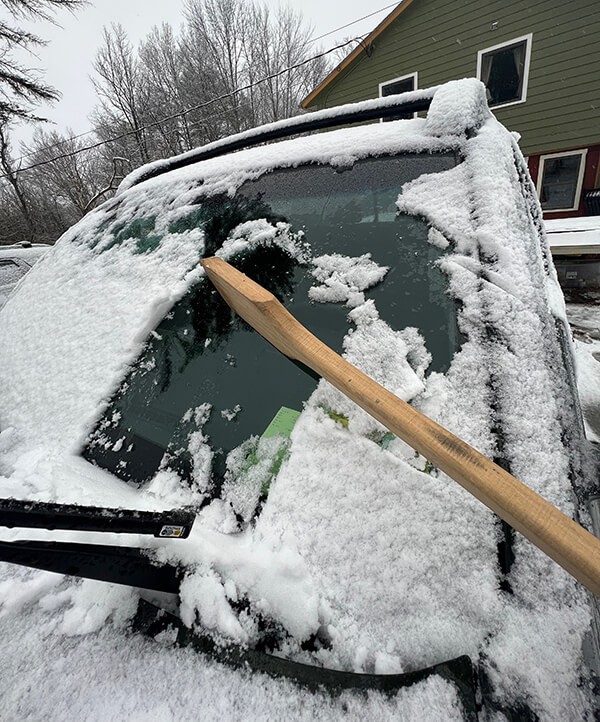
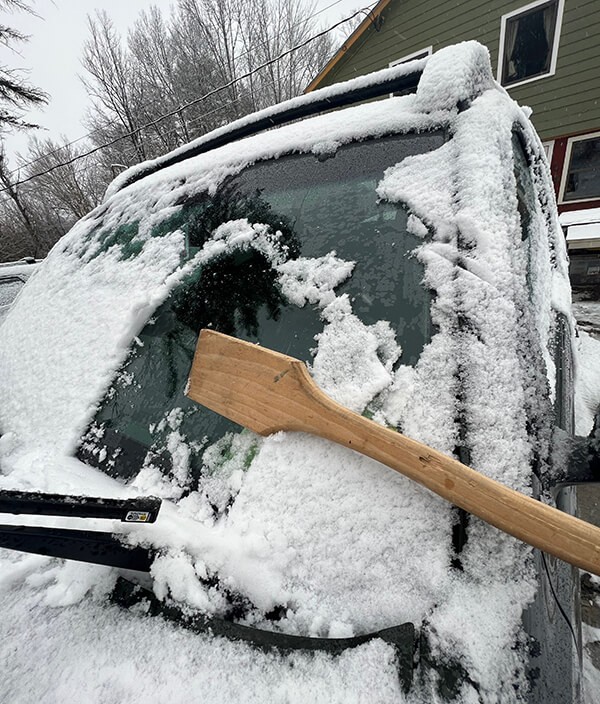
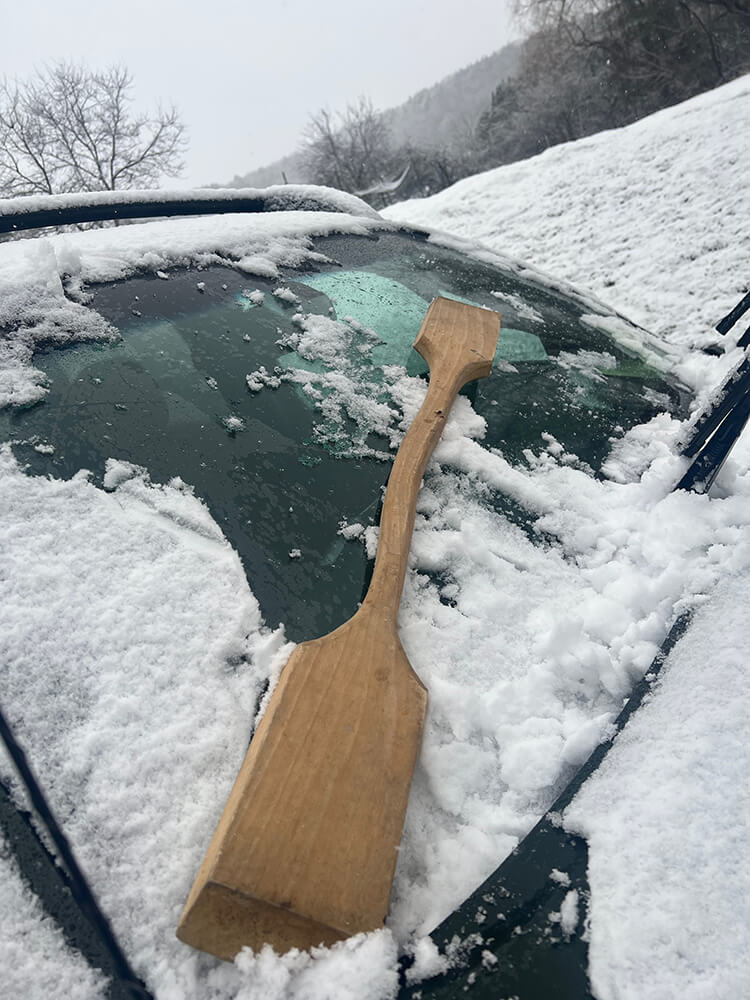
The first generation “I-Sloyd” window scraper was sawn from a 4/4′” x 5″ x 36″ plank of hard maple and fitted with an angle-cut end. I made it in 5 minutes, and it lasted several winters. When the scraper end lost its edge, I disc-sanded a new angle and was ready for the next snow and ice storm.
Later, I made wood window scrapers for my family to use with our three cars. My kids tried my first-generation solid wood window scrapes but soon migrated back to the old aluminum and plastic models because of their weight and convenience. I needed to address weight, public perception, and durability in my design. I made several variations, introducing salvaged polypropylene plastic as the scraper head, Stainless screws and tee nuts, and a brush component. I manufactured the Scraper handle body from a 4/4′” x 5″ x 36″ hardwood plank and later added a removable plastic blade for scraping and a fiber brush for snow clearing.

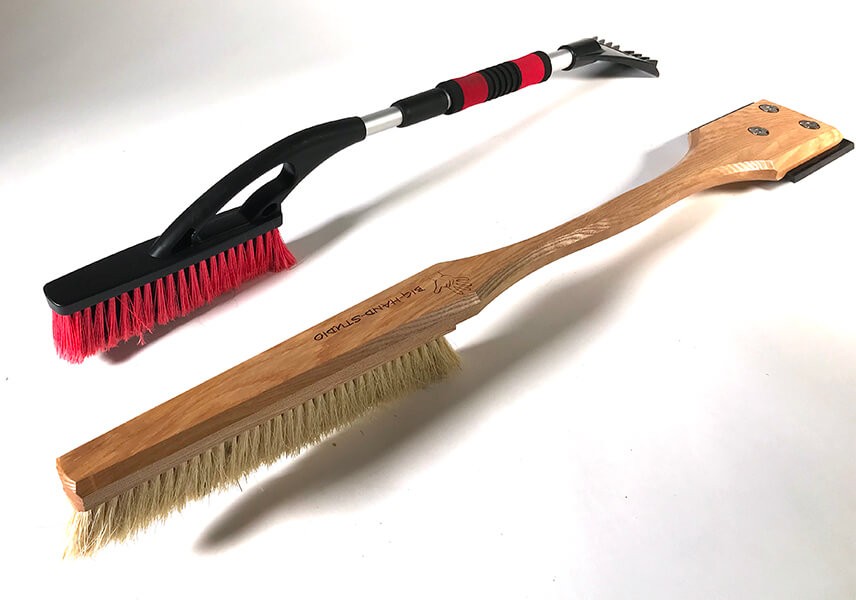

Why add plastic? For public perception and the option for customization.
This window Ice Scraper is the first object in a series of “I-Sloyd” making experiences designed to return us to greater self-sufficiency and conscious environmental building. “I-Sloyd” exercises are based on everyday products made of “Upcycled” materials that minimize or eliminate the use of plastics. I call this series of objects “I-Sloyd” because it combines the revival of ‘craft’ or ‘manual skill,’ with sustainable principles of “Circular Economy” such as “Upcycling.” All products will employ renewable materials wherever possible. Crafting an “I-Sloyd” window scraper promotes self-reliance as the crafter will manufacture the product by hand within a household workshop. “I-Sloyd” promotes self-reliance over System dependence.
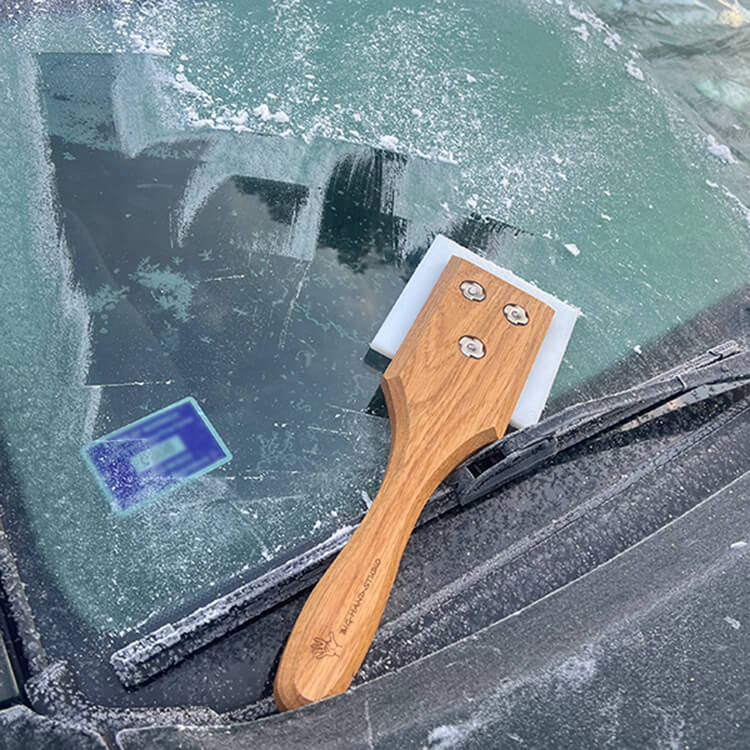
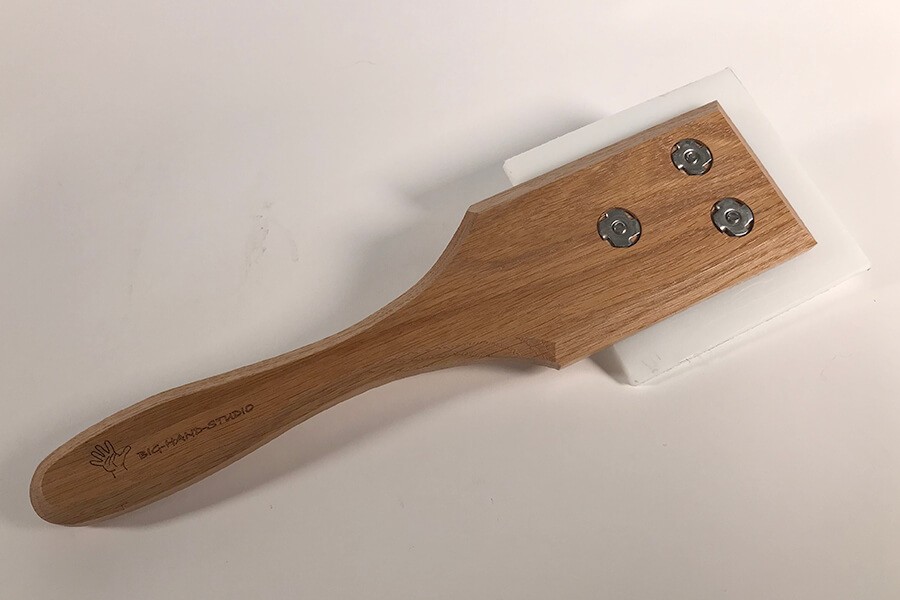

“I-Sloyd” is a craft practice for 21st-century living that combines making things by hand, tool use, and the intended use of renewable materials to promote sustainability and self-sufficiency. Humans have become increasingly dependent on more complex systems due to our reduced understanding of materials and tools. Our increased dependence on “the system” takes us further from our self-sufficiency.
As a “transition” tool, my first-generation Ice scraper, made entirely from wood, is superior in terms of ease of manufacture, the economy of material, and sustainable principles of “Circular economy.” It captures the Forrest Gump theory of design “Simple is as Simple does.”
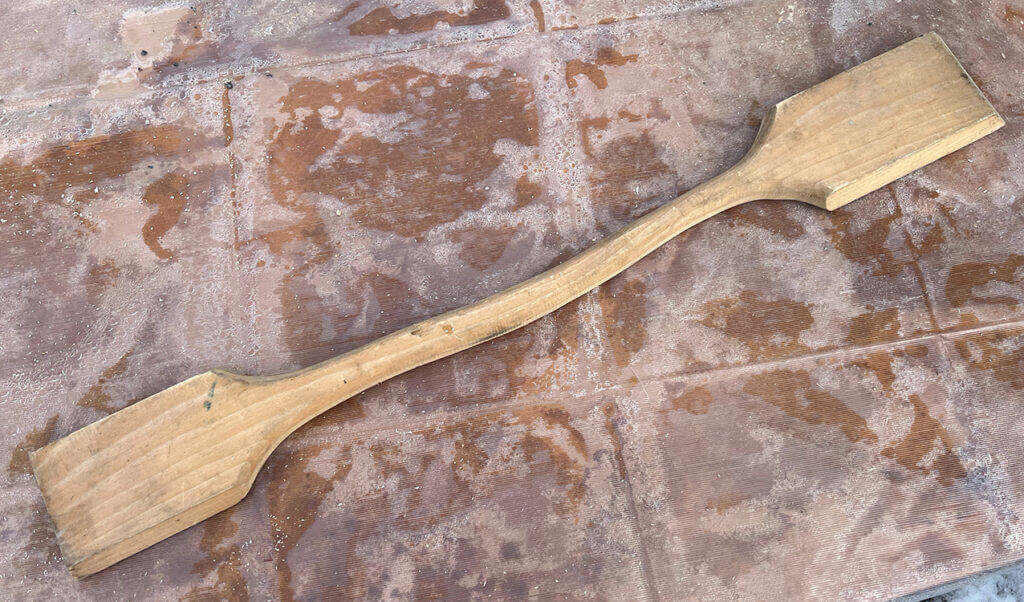
The Plastic and Metal option – System Generated – Destined for the Landfill
